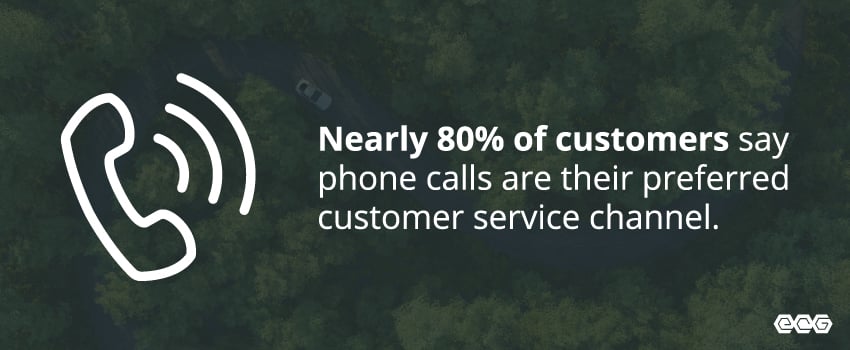Modern businesses can no longer afford sluggish, outdated phone technology that stifles growth. Luckily, SIP trunking has emerged as an innovative solution, offering the flexibility and scalability to meet modern communication needs.
Experts predict the SIP trunking market will reach $43.74 billion globally by 2031,1 showcasing its immense popularity for businesses of all sizes. Read on to learn about the importance of SIP trunking, how it works, and what it can do for your business.
What Is SIP Trunking?
SIP trunking refers to using Session Initiation Protocol (SIP) to make phone calls over an internet connection instead of traditional copper phone lines. It’s a digital method for delivering voice, video, messaging, and other communications services, enabling businesses to replace their analog and ISDN phone lines with a modern, flexible, and cost-effective alternative.
How Does SIP Trunking Work?
SIP trunking allows your business to make phone calls over the internet instead of relying on legacy telephony infrastructure like copper TDM or POTS (Plain Old Telephone Service) lines. When someone dials a number, your PBX (Private Branch Exchange) initiates the call and sends it through a SIP trunk to your SIP provider via your internet connection. The SIP provider then routes the call to its destination — whether that’s another VoIP endpoint or through the public switched telephone network (PSTN), which is often integrated into modern VoIP networks. SIP (Session Initiation Protocol) is the signaling technology that establishes, manages, and terminates these sessions, while protocols like RTP (Real-time Transport Protocol) handle the actual transmission of voice and video. This setup enables businesses to scale communications easily, reduce costs, and consolidate voice, video, and messaging over a single IP-based infrastructure.
Here's an overview of how it works:
SIP Channels
SIP channels are the virtual phone lines that replace analog phone lines. Each SIP channel allows for one incoming and one outgoing call at the same time. Businesses can scale the number of SIP channels up or down as needed through the SIP provider's online portal without having to install new physical phone lines.
SIP Trunks
SIP trunks bundle multiple SIP channels together, usually anywhere from 10 to 100+ channels. The SIP trunk connects the business's PBX phone system and the SIP provider over the internet. Most businesses only need one to three SIP trunks depending on their call volume and number of users, but additional SIP trunks can be added as needed to increase capacity.
SIP Protocol
SIP, or Session Initiation Protocol, is the signaling protocol used to initiate, manage, and end communication sessions like voice and video calls, conferencing, and instant messaging. SIP handles the setup and teardown of sessions between endpoints over an IP network and enables all multimedia communications transmitted via SIP trunking. It works with other protocols like RTP to transmit voice and video data.
SIP Provider
A SIP provider offers the SIP trunking service that connects businesses to their telephony network. The SIP provider manages the platform and technology that enables the SIP trunks to work over the internet, playing a critical role in the reliability and uptime of the SIP trunking service.
.jpg?width=850&height=350&name=ecg-blog-siptrunking-inline1%20(1).jpg)
SIP Trunking Architecture
A well-designed SIP trunking architecture ensures high-quality, reliable, and scalable communications. Here’s a breakdown of the key components that make the system work.
1. Private Branch Exchange (PBX)
This is the internal phone system used by your business to manage calls. It routes calls between internal users and connects to the SIP trunk for external calls. PBXs can be on-premises or cloud-based (hosted PBX), though for purposes of SIP trunking we usually assume the former.. This is usually software, such as Cisco Call Manager, Asterisk, FreePBX.
2. SIP Trunks and SIP Channels
A SIP trunk is a virtual connection that links your PBX to the SIP provider. Each trunk includes multiple SIP channels, which function like individual phone lines — each one allowing a single call at a time. Businesses can easily scale the number of channels based on need without new hardware.
3. Session Initiation Protocol (SIP)
SIP is the signaling protocol responsible for initiating, managing, and terminating communication sessions. It works in conjunction with other protocols (like RTP) to ensure that voice, video, and messaging data flows efficiently and securely.
4. Real-Time Transport Protocol (RTP)
RTP is used to transmit the actual media — such as voice and video — once a session has been established via SIP. It ensures real-time data delivery with minimal delay and high clarity.
5. SIP Provider Network
The SIP provider is responsible for routing calls from your business to external numbers, whether over VoIP or the PSTN. Their network infrastructure handles call delivery, number management, and quality of service. A reliable provider also offers redundancy and failover options to ensure uptime.
6. Internet Connectivity
Since SIP trunking relies on your data connection, a high-bandwidth, low-latency internet connection is essential. Some businesses use dedicated bandwidth or QoS (Quality of Service) settings to prioritize voice traffic and prevent call degradation, but as rule of thumb, higher-speed Internet links allow more reliable, high quality communication.
What Are the Benefits of SIP Trunking?
There are many reasons SIP trunking has become a top choice for businesses upgrading their communications:
Cost Savings
In many cases, switching to SIP trunking helps companies lower the total cost of ownership (TCO) of their phone system by up to 60%.2 With SIP trunking, you only pay for the number of SIP channels your company needs rather than overpaying for unused phone lines. SIP trunking also eliminates the need for expensive hardware as it uses existing infrastructure – and removes ongoing maintenance and repairs required for analog phone lines and equipment since it’s delivered digitally.
Scalability
As your organization grows and requires more capacity for concurrent calls, you can simply request additional SIP channels or trunks from your provider. Adding new SIP channels takes minutes rather than waiting days or weeks for new analog lines to be installed, so you no longer have to worry about an inflexible phone system limiting your business growth.
Reliability
SIP trunking offers more reliability compared to legacy phone lines. SIP providers implement redundant systems to minimize downtime, so even if your business loses power, your SIP phone system maintains connectivity. And while calls over analog lines are restricted to one path, SIP trunks dynamically route calls over optimal network paths for added reliability.
Flexibility
Since SIP trunks are location agnostic, your business can implement local phone numbers from different area codes to establish a local presence in different geographic areas. If you need to move your organization's headquarters, your SIP trunking phone numbers can move with you. SIP trunking also supports flexible working models by letting employees make and receive calls on desktop phones or softphones via laptops and mobile devices.
High Call Quality
Nearly 80% of customers still rank phone calls as their preferred customer service channel.3 The bandwidth available with SIP trunking ensures consistently high-quality calls. These solutions minimize latency and jitter for clear voice quality without static or echoes. And because SIP trunks provide QoS and prioritization of voice traffic, you can rest easy knowing call quality issues will no longer degrade the customer experience or frustrate your teams.
Centralized Management
With SIP trunking, your business can manage voice, video, conferencing, instant messaging, and other communication channels from a single interface. IT staff no longer have to manage separate tools and platforms for telephony, video, and messaging – instead, SIP trunking bundles everything into one place for simplified management and administration.

What Is Elastic SIP Trunking?
Elastic SIP trunking is a flexible, cloud-based version of traditional SIP trunking that automatically scales to match your business’s real-time call volume. Unlike static SIP trunks that require you to pre-purchase a fixed number of channels, elastic SIP trunking dynamically adjusts capacity up or down based on demand — meaning you only pay for what you actually use. This makes it an ideal solution for businesses with unpredictable or seasonal call patterns, such as contact centers, event-based organizations, or companies experiencing rapid growth.
Elastic SIP trunking also improves resilience and uptime by leveraging distributed, cloud-native infrastructure, and is often integrated with modern VoIP platforms or communications APIs. In short, it combines the power of SIP trunking with the agility of the cloud, giving businesses greater control, cost-efficiency, and scalability in how they manage voice communication.
SIP Trunking vs VoIP: What’s the Difference?
While SIP trunking and VoIP are closely connected, they refer to different layers of internet-based communication. VoIP (Voice over Internet Protocol) is the broad term for any voice call made over an IP network, whether through mobile apps, desktop software, or cloud-based phone systems. SIP trunking, on the other hand, is a specific method of delivering VoIP by using the Session Initiation Protocol (SIP) to connect a business’s PBX system to the internet.
In other words, SIP trunking is one way to enable VoIP — particularly useful for companies that want to modernize their existing phone infrastructure without switching entirely to a hosted solution. VoIP can exist without SIP, but SIP trunking cannot exist without VoIP. For businesses with on-premise systems or hybrid setups, SIP trunking offers the flexibility and control of VoIP with the reliability and structure of traditional telephony.
Sometimes, the terms VoIP and Unified Communications (UC) refer to voice services delivered to a traditional desk or home phone, while 'SIP' is an abbreviation for 'SIP trunking' where a PBX is involved.
Support Growing Demand With Scalable SIP Trunking Solutions From ECG
With more businesses operating globally or enabling remote work, they need a flexible alternative to the rigid analog phone systems that have been the standard for decades. SIP trunking provides agility, cost savings, reliability, and scalability, so it's easy to see why this technology is quickly replacing legacy phone solutions.
However, providing SIP trunking services can be a struggle for service providers serving many customers. Managing SIP trunking and voice services at scale requires robust platforms like Alpaca by ECG. Alpaca’s bulk provisioning feature makes it easy to build customers and configure accounts in minutes rather than hours, ensuring your SIP trunking services are deployed smoothly and can continue to scale as your customers’ needs grow.
Contact the ECG team today to learn more about how Alpaca can help streamline service activation and SIP trunking management.
Source:


